Disclosure: This article contains affiliate links. We may earn a commission from purchases at no extra cost to you, which helps our travel content.
There's a rhythmic shift that happens when you transition from the vast expanses of Hwange National Park to the bustling frontier town of Victoria Falls. After a week tracking elephants through golden savanna and falling asleep to distant lion roars, the urban pulse of Vic Falls offers an entirely different Zimbabwean experience – one where colonial architecture meets traditional markets, and the thundering cascade creates its own microclimate and cultural ecosystem. This two-week journey through Zimbabwe's northwestern corner offers the perfect balance of wilderness and urban exploration.
Hwange: Where Wildlife Sets the Urban Boundary
Before diving into Victoria Falls' urban landscape, understanding Hwange provides essential context. Zimbabwe's largest national park isn't just a wildlife sanctuary – it's a masterclass in the delicate boundary between wilderness and civilization.
During my week at Hwange, I stayed at Nantwich Lodge, a beautifully repurposed ranger outpost whose architecture tells the story of Zimbabwe's conservation history. The lodge sits on elevated ground, its wide verandas designed to maximize wildlife viewing while creating natural separation between human and animal space. This thoughtful boundary-setting is something I've observed across continents, from Australian outback stations to Scandinavian wilderness cabins.
The park's main camp area functions as a miniature township, complete with a small museum documenting the region's complex relationship between human settlement and wildlife conservation. What fascinated me most was how the camp's layout – with its circular arrangement of buildings around a central water source – mirrors traditional rural Zimbabwean settlements.
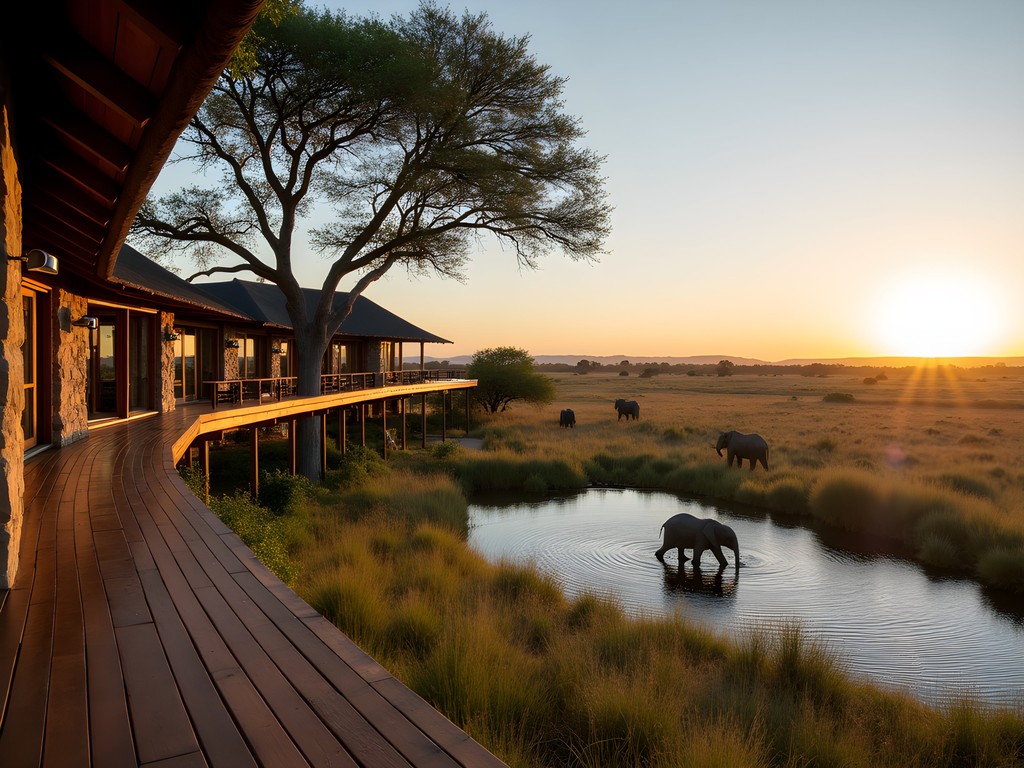
💡 Pro Tips
- Visit Hwange's main camp museum to understand the park's colonial and post-independence history
- Book accommodations near Nyamandlovu Pan for the best elephant viewing without needing a vehicle
- The park's eastern boundary villages offer authentic cultural experiences rarely mentioned in guidebooks
The Railway Heritage of Victoria Falls
Victoria Falls town began as a railway settlement, and this transportation heritage remains central to its urban identity. The journey from Hwange to Vic Falls follows the historic Cape-to-Cairo railway route envisioned by Cecil Rhodes, a complicated colonial figure whose legacy is visible throughout Zimbabwe's built environment.
The Victoria Falls Hotel, constructed in 1904 to house railway workers and early tourists, remains the architectural crown jewel of the town. While staying there wasn't in my mid-range budget this trip (I opted for the excellent Shongwe Lookout instead), I made daily pilgrimages to its terraced gardens for sunset drinks. The hotel's Edwardian elegance, with its wide corridors designed to catch cross-breezes and its strategic positioning for bridge and falls views, offers fascinating insight into colonial-era urban planning.
Don't miss the Victoria Falls Railway Museum, a compact but information-rich collection housed in the original station building. For train enthusiasts, the museum sells limited spots on the inspection trolley that maintenance crews use on the historic Victoria Falls Bridge – an experience that combines engineering appreciation with unparalleled gorge views.
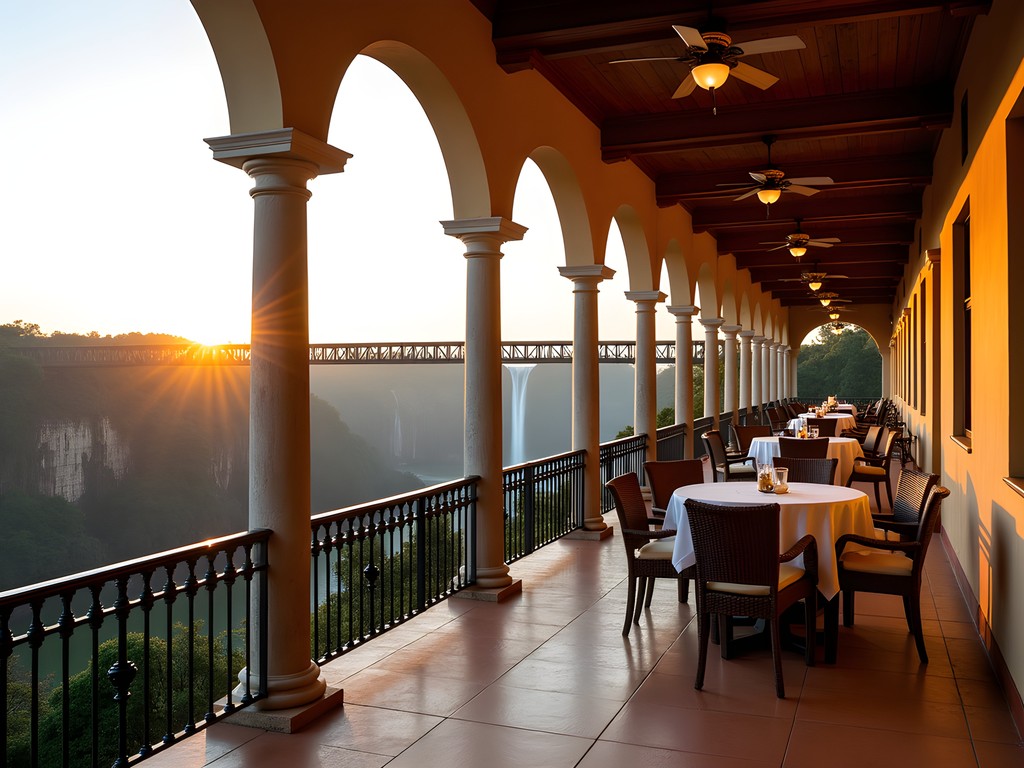
💡 Pro Tips
- Even if not staying at the Victoria Falls Hotel, visit for high tea on the terrace for architectural appreciation and falls views
- The railway museum offers special evening tours during full moon periods
- Book the bridge inspection trolley tour at least two days in advance as spots fill quickly
Navigating the Markets and Urban Spaces
The true pulse of Victoria Falls town beats in its markets and public spaces. After the isolation of Hwange, I found myself craving human interaction, and the town's compact layout makes it perfect for urban exploration on foot.
Start at the central Elephant's Walk Shopping Centre, a thoughtfully designed complex that houses artist studios alongside retail spaces. The architecture incorporates traditional stone and thatch elements with modern lines, creating shaded courtyards where local and international visitors mingle. I spent hours here chatting with sculptors whose work transforms springstone into fluid animal forms.
For a more authentic market experience, head to the Chinotimba Township Market in the residential area about 4km from the tourist center. Here, vendors sell everything from handwoven baskets to street food. I recommend bringing a reusable market bag that folds into a compact pouch – it's perfect for carrying market purchases and reduces plastic waste.
The town's layout reveals its colonial planning history, with wide avenues designed for vehicles rather than pedestrians. However, recent urban improvements have added shaded walkways connecting major attractions. During midday heat, I relied heavily on my cooling towel – simply wet it at one of the public water points, wring it out, and it provides hours of cooling relief while exploring.
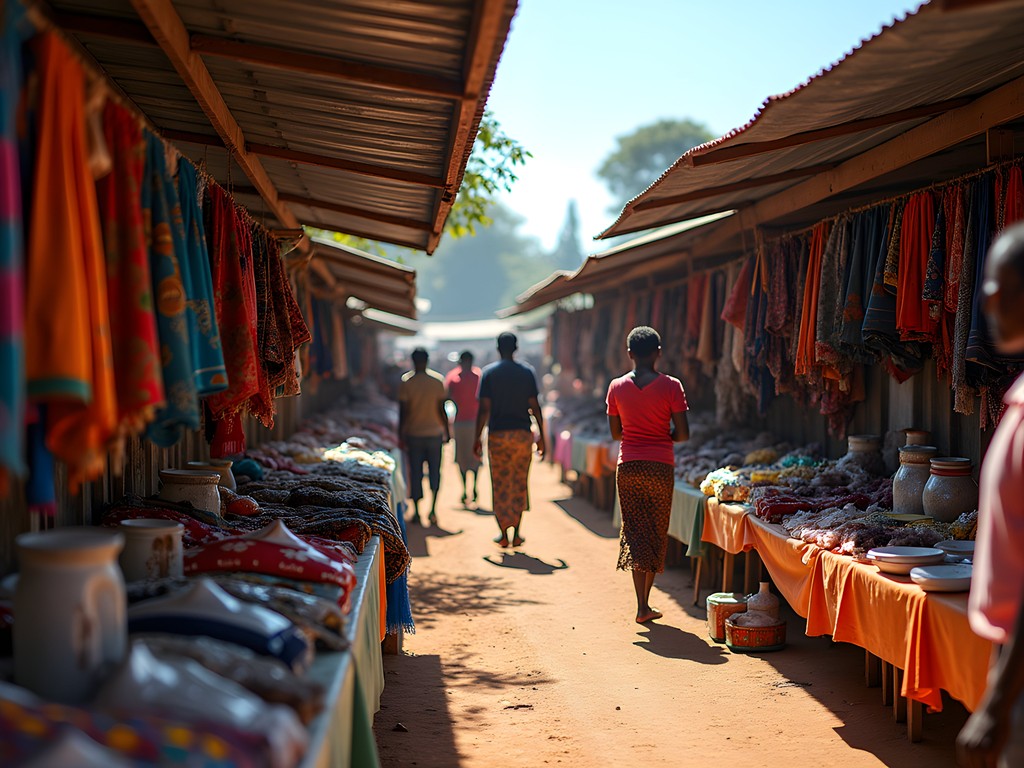
💡 Pro Tips
- Visit the Chinotimba Township Market early morning (6-8am) when locals shop and prices are lower
- The Artists' Cooperative behind the main supermarket offers better prices than tourist shops
- Use landmarks rather than street names when asking for directions – many locals navigate by notable buildings
The Falls: Urban Planning Around a Natural Wonder
What fascinates me most about Victoria Falls town is how its entire urban development revolves around optimizing access to and views of the waterfall. The town exists because of the falls, and this relationship between natural wonder and built environment creates a unique urban planning case study.
The Victoria Falls National Park entrance sits at the end of the main street, creating a pedestrian-friendly gateway to the natural attraction. The park itself features an ingenious network of viewpoints connected by paths that hug the gorge opposite the falls. During my visit in summer, the falls were at maximum flow, creating a drenching mist that required proper rain protection. My waterproof phone pouch proved essential for capturing photos without risking electronics.
For the best architectural appreciation of the falls, I recommend the Zambezi Explorer sunset cruise. Unlike smaller boats, this triple-decker vessel offers elevated viewing platforms that create perfect sightlines to appreciate both the natural gorge formation and the engineering marvel of the bridge spanning it. The upper deck's design, with its cantilevered shade structures, demonstrates how modern tourism infrastructure can complement rather than compete with natural landscapes.
Don't miss the chance to walk across the Victoria Falls Bridge between Zimbabwe and Zambia. This 1905 steel arch construction not only showcases period engineering but offers the best perspective on how the falls created this dramatic landscape. The bridge tour provides fascinating insights into the challenges of building such a structure in a remote location during colonial times.
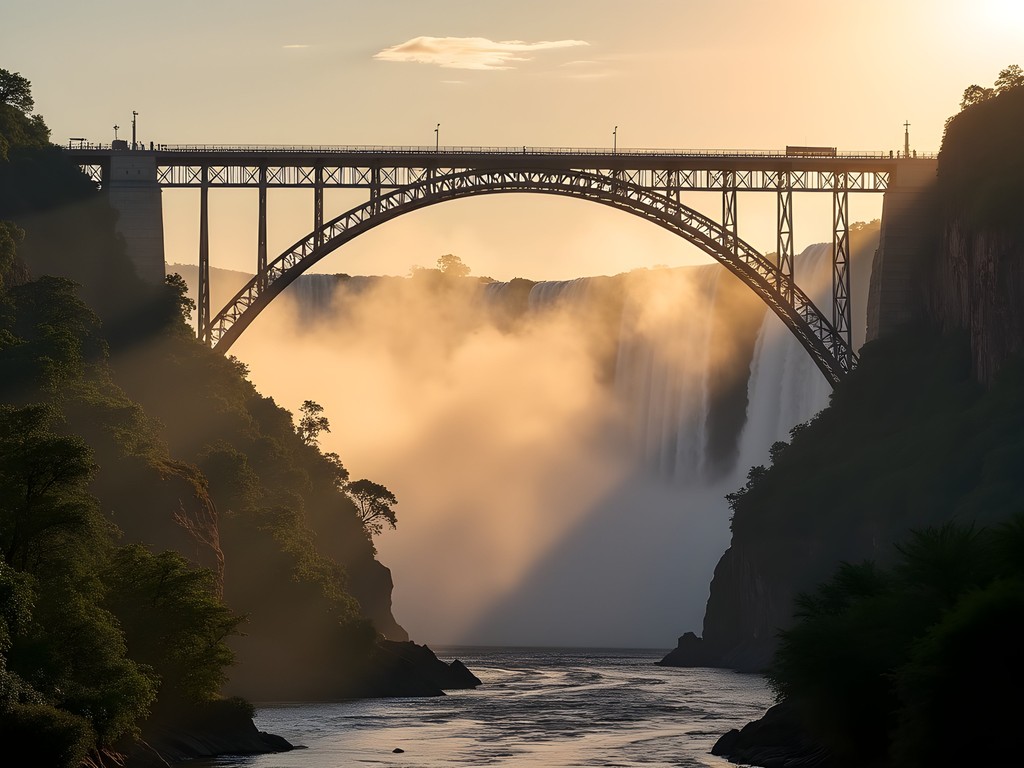
💡 Pro Tips
- Rent raincoats at the falls entrance rather than bringing your own – they're designed for the specific conditions
- Visit the falls at different times of day – morning rainbows and afternoon golden light create completely different experiences
- The often-overlooked Zambian side offers excellent architectural views of the bridge that aren't possible from Zimbabwe
Accommodation: From Colonial Heritage to Modern Design
Victoria Falls offers a fascinating architectural timeline through its accommodation options. The town's hospitality buildings tell the story of Zimbabwe's evolving identity from colonial outpost to independent tourism hub.
I split my stay between two strategically different properties. First, the N1 Hotel Victoria Falls represents modern African design sensibilities – clean lines, locally-sourced materials, and sustainable practices like rainwater harvesting. Its location in the newer part of town provides an interesting contrast to the colonial-era buildings downtown.
For my final three nights, I moved to Batonka Guest Lodge, a boutique property that beautifully reimagines colonial architecture for contemporary comfort. The building's deep verandas, high ceilings, and carefully positioned windows create natural cooling without requiring excessive air conditioning – architectural adaptations to climate that we're increasingly rediscovering as sustainable design principles.
What impressed me most was how both properties incorporated elements of Ndebele and Shona design traditions – geometric patterns, circular forms, and specific color palettes – without resorting to superficial 'safari chic' aesthetics that plague too many African tourism properties. This architectural authenticity reflects a confident Zimbabwe reclaiming its design heritage.

💡 Pro Tips
- Request rooms on the east side of properties to avoid afternoon heat buildup
- Many mid-range guesthouses offer significant discounts for stays of 3+ nights
- Look for properties with elevated positions – they catch better breezes and often have superior views
Final Thoughts
As my two weeks in northwestern Zimbabwe drew to a close, I found myself reflecting on the remarkable contrast between Hwange's wilderness and Victoria Falls' frontier town energy. What makes this combination so compelling isn't just the diversity of experiences – it's how each environment enhances appreciation of the other. After days in the bush, Victoria Falls' urban amenities feel luxurious; after understanding the town's development around the natural wonder, you view the falls themselves with deeper appreciation of their cultural and economic significance.
This region offers a perfect case study in how human settlements adapt to and celebrate natural features – from Hwange's camps designed to minimize wildlife impact to Victoria Falls town's evolution from railway outpost to tourism hub. For travelers interested in the intersection of built and natural environments, few destinations offer such rich material for observation and reflection.
As Zimbabwe continues developing its tourism infrastructure, I hope the thoughtful architectural approaches I observed will prevail – designs that honor both colonial heritage and indigenous traditions while creating sustainable spaces for visitors and residents alike. This balance of respecting history while embracing contemporary needs is something all developing destinations can learn from.
✨ Key Takeaways
- Combining Hwange National Park with Victoria Falls town creates a perfect wilderness/urban contrast in a two-week Zimbabwe itinerary
- Victoria Falls town's architectural heritage tells the story of Zimbabwe's colonial past and independent present
- The relationship between the natural wonder of the falls and the built environment around it offers fascinating urban planning insights
📋 Practical Information
Best Time to Visit
May-September for moderate falls flow and comfortable temperatures; summer (November-March) for maximum water volume
Budget Estimate
$100-180 USD per day including mid-range accommodation, activities and meals
Recommended Duration
12-14 days (5-7 days Hwange, 5-7 days Victoria Falls)
Difficulty Level
Easy

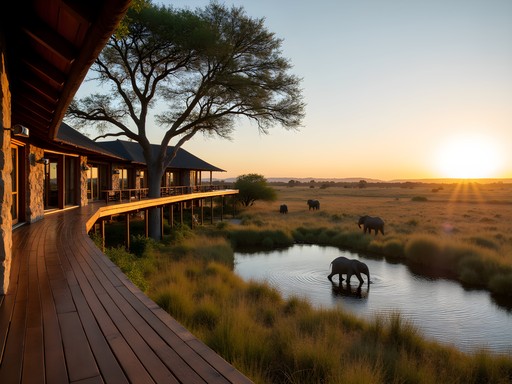












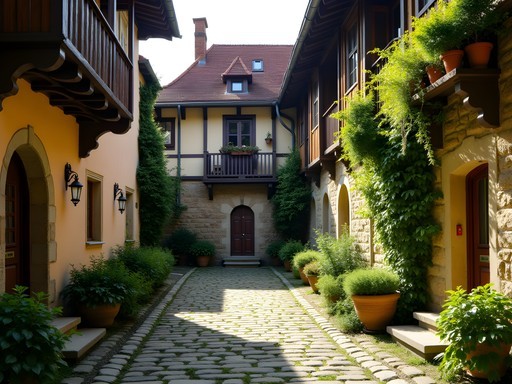
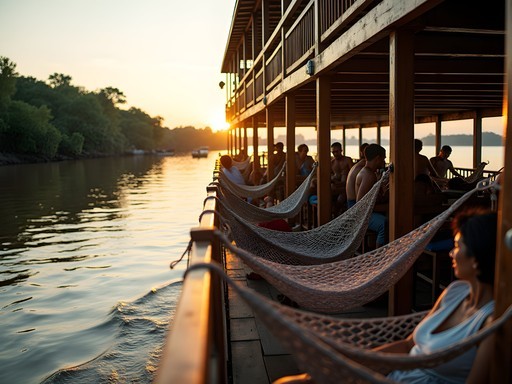
Comments
Jennifer Rodriguez
Really appreciated your insights on the urban planning around Victoria Falls. It's something I've been researching for my own blog series on tourism infrastructure in natural wonders. The way Zimbabwe has managed (or sometimes struggled with) balancing preservation and accessibility is fascinating. I spent three weeks there last year documenting the changing relationship between the town and the national park. Found that Zimbabwe travel guide super helpful for understanding the historical context of how the town developed around the railway. Did you notice how the newer developments are pushing further from the falls? Seems like there's growing awareness about maintaining that buffer zone.
Jerry Kelley
Thanks Jennifer! Yes, I definitely noticed that tension between development and conservation. The older buildings closer to the falls have so much character compared to the newer developments. Would love to read your blog series when it's published!
sunnyblogger
OMG this brings back memories!!! Victoria Falls town was such a fun surprise after our Hwange safari. We stayed at that little hotel near the railway museum and walked EVERYWHERE! The contrast between wilderness and town life is exactly what makes Zimbabwe so special. Did you try the bungee jump? I was too scared but my husband did it and still talks about it constantly lol!
redfan
How did you get between Hwange and Victoria Falls? Planning our first Zimbabwe trip for next spring and trying to figure out transportation options.
Jerry Kelley
I arranged a private transfer through my lodge, but there's also a train connection (though it's not always reliable). Some safari companies will include the transfer as part of a package deal.
wanderlustguy
We used Wild Horizons for our transfer and they were great. Not the cheapest option but reliable and the driver shared lots of local knowledge during the ride.
wanderlustguy
That transition from Hwange to Victoria Falls is something special, isn't it? Did the same journey last year and was blown away by how quickly you go from tracking elephants to sipping cocktails overlooking the falls. The railway heritage stuff you mentioned was something I completely missed though - wish I'd known about that! Did you check out the local markets? Found some amazing wood carvings that are still my favorite souvenirs.
Jerry Kelley
Yes! The markets were incredible. I spent way too much time haggling for those carved animals. The railway museum is pretty small but worth a quick visit if you ever go back.
dreamfan
Just booked my tickets after reading this! Can't wait to experience both places.
luckyexplorer
OMG your photos of the falls are AMAZING!! Going in August and I can't wait! Did you do the Devil's Pool? I'm terrified but feel like I have to try it!
Jerry Kelley
Thanks! I did do Devil's Pool - it's definitely scary at first but the guides are incredibly professional. Just make sure you book well in advance as spots fill up quickly!
Nicole Russell
Loved reading about your experience transitioning between these two incredible places! When I visited last year, I found having a good daypack essential for those market explorations in Victoria Falls. I used my waterproof backpack which was perfect for carrying water, market finds, and protecting my camera during those sudden afternoon showers near the falls. The Railway Heritage section of your post was especially interesting - I missed that on my trip and now I'm kicking myself!
wavebackpacker6013
Is a week enough time to do both locations justice? Or should I focus on just one?
mountainking
I'd say minimum 4 days in Hwange and 3 in Vic Falls. You could do less in Hwange if you're not big into safaris, but you'd miss out on the amazing night drives and different sectors of the park.
Jerry Kelley
I agree with mountainking. A week is tight but doable if you plan efficiently. If you're a wildlife enthusiast, prioritize Hwange. If you're more into cultural experiences and adventure activities, give more time to Vic Falls.
Fatima Sims
Jerry, your post brought back so many memories! I did this same journey last year and was equally struck by the contrast. The markets in Victoria Falls are such a sensory experience - the colors, sounds, and that incredible wood carving craftsmanship! One tip for anyone heading there: spend some time chatting with the artisans about their techniques. I learned that many families have been passing down these skills for generations, and they're often happy to show you their process if you express genuine interest. I still treasure the hippo carving I bought directly from the artist who made it.
mountainking
Just got back from this exact route last month! The contrast between Hwange and Vic Falls is exactly as you described. We spent 5 days in Hwange watching elephants by the dozens at watering holes, then hit the urban buzz of Vic Falls. The Railway Museum was a hidden gem - spent way more time there than I expected. Did you try any of the restaurants along Livingstone Way? We found some amazing local cuisine there.
Jerry Kelley
I did! Mama Africa was my favorite - that peanut stew was incredible. And you're right about the Railway Museum, such an unexpected highlight.
Venture X
Premium card with 2X miles, $300 travel credit, Priority Pass